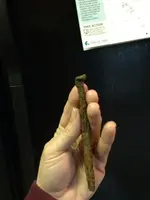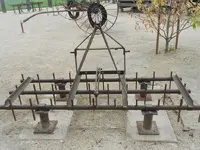MissIron.Maiden
Full Member

I find these large ( hand forged?) one sided sloped head nails around my property. Usually they are about one or 2 inch thick encrusted things, so they been in the ground a good while. I'm sure their true size is slimmer, but this is about as slim as I get them without them falling apart. Any special purpose? Just wondering what that sloped head is about and they are rectangular and seem blunt ended. Unless the points all broke off?




 I think Mr. Mercer could write a book just on the nail heads in my yard
I think Mr. Mercer could write a book just on the nail heads in my yard